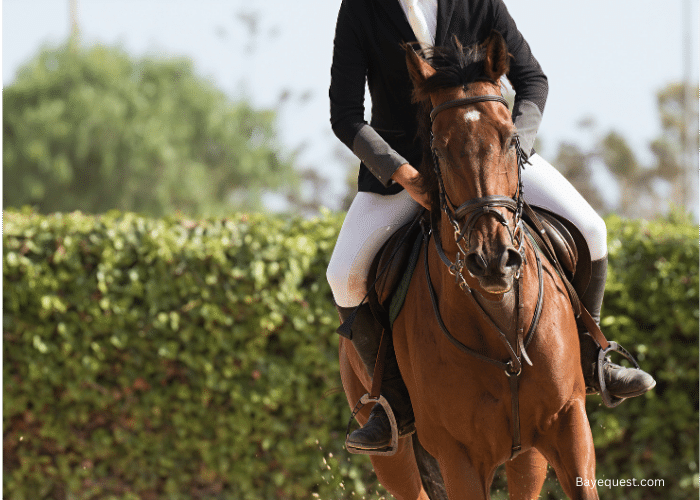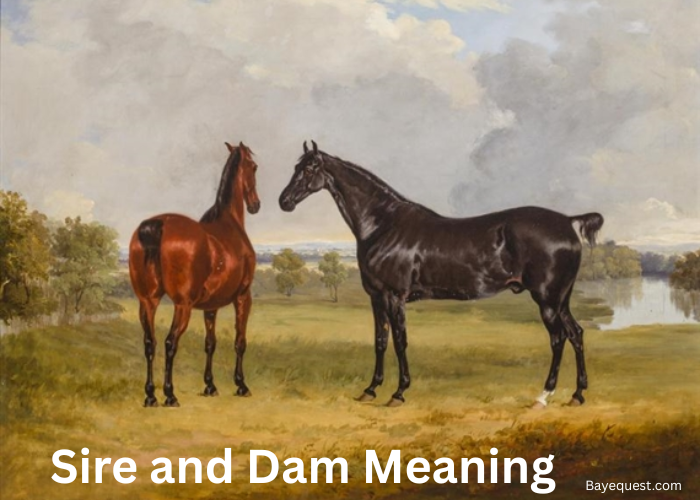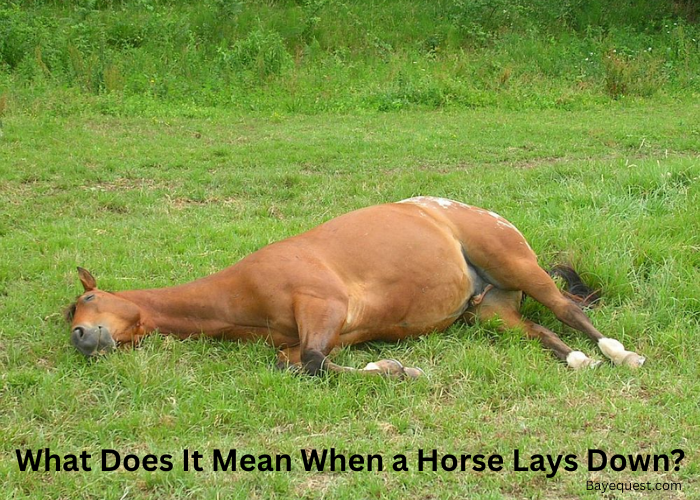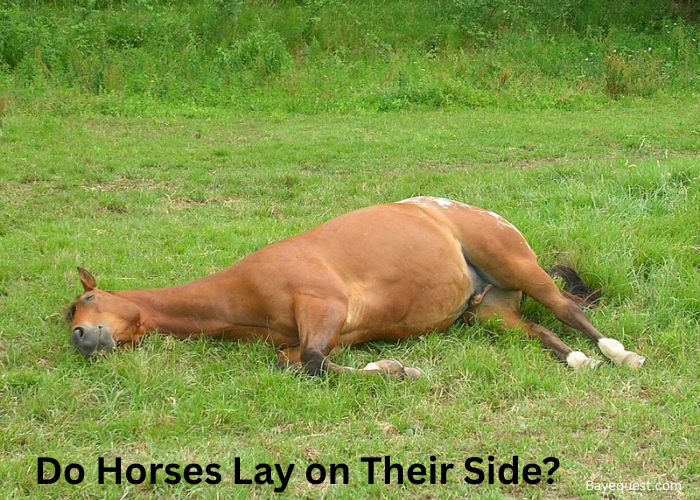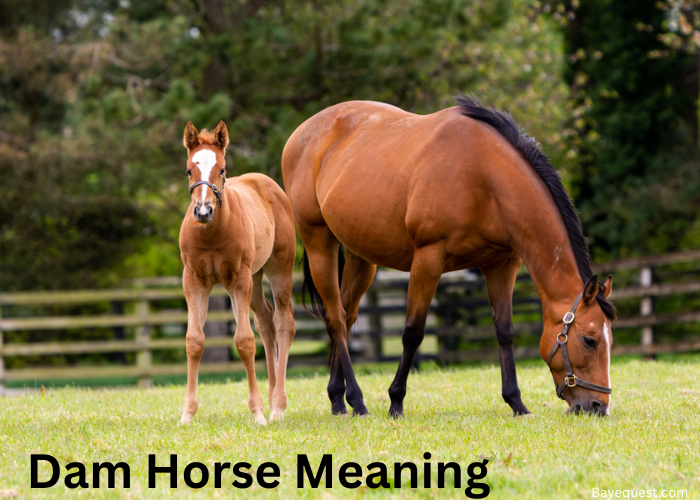Riding a horse is more than just speed and freedom. It’s about communication, connection, and control.
One essential tool that makes this possible is the bridle. A bridle isn’t just leather and metal; it’s how you guide, signal, and stay in sync with your horse.
It helps you turn, stop, and ride with confidence. Without it, even the most skilled rider can feel disconnected.
Whether you’re just starting out or have years of experience, understanding the bridle is key to better, safer riding. Let’s explore why it matters so much.
Why are Bridles Used in Horseback Riding?
Bridles are essential in horseback riding for a few key reasons.
First, they give riders control. With a bridle, you can guide your horse, directing them left or right and even control their speed. It’s like the steering wheel of a car but for horses.
Second, bridles are all about communication. They help you send signals to your horse, telling them what you want them to do next. It’s how you whisper your wishes into your horse’s ear, so to speak, without saying a word.
Lastly, bridles are crucial for safety. They ensure that both you and your horse can work together smoothly and safely. Managing a horse, especially at higher speeds or in complex maneuvers, would be much harder and riskier without a bridle.
So, whether you’re just trotting around a field or jumping over obstacles, a bridle makes sure you and your horse are speaking the same language and staying safe while you’re at it.
What are Horse Bridles?
Horse bridles are a bit like the control center for riding. They’re made up of a headpiece, a bit that goes in the horse’s mouth, and the reins that you hold.
When you tug on the reins, the bit applies gentle pressure to the horse’s mouth or head, guiding the horse in the direction you want.
Bridles are crucial for communicating with your horse. They help you tell them when to turn, stop, or slow down. They ensure you and your horse can work together as a team, making your ride smoother and safer.
Origin and History of Bridles
The story of bridles goes way back, thousands of years. The first bridles were simple, made from materials like ropes or plant fibers.
Ancient people used these to guide their horses while riding or driving chariots. As time went on, bridles evolved.
By the time of ancient civilizations, bridles had become more sophisticated, incorporating metal bits and leather straps.
These changes weren’t just about looks. They were about making communication between rider and horse clearer and more precise. This was especially important in battles and for managing horses in different terrains.
Today’s bridles, with their refined designs and materials, are a result of all this history. They combine centuries of innovation aimed at creating a strong bond and clear communication path between the horse and rider.
Whether for work, sport, or leisure, the bridle remains a key piece of horse riding equipment, a link not just between two beings, but across history.
How Do Bridles Work?
Bridles work by helping you communicate with your horse. Think of it like this: when you pull on the reins, which are attached to a bit in the horse’s mouth, it sends a message.
This bit can gently press on the horse’s mouth or cheeks, depending on the type. When you tug left, the horse feels the pressure and turns left. Pull right, and your horse goes right. Pull back, and the horse slows down or stops.
It’s not just about pulling and pushing, though. Good riders use these cues subtly, blending them with other signals like body position and leg pressure.
This way, the horse isn’t just following commands; it’s having a conversation with the rider. Bridles make this dialogue possible, making sure you and your horse can understand each other clearly.
Types of Bridles
There are several types of bridles, each designed for specific needs and riding disciplines. Some of these bridles include:
Hackamore bridle
A hackamore is a bitless bridle that applies pressure on the nose and chin rather than in the mouth. It consists of a headstall and a noseband, often made of braided leather or rope, and sometimes incorporates a metal chain.
The reins attach to shanks extending from the noseband, multiplying the pressure the rider applies. This setup can be quite powerful, providing significant control without a lot of effort.
Hackamore bridles are popular in Western riding but are also used in other disciplines. They are perfect for horses with dental issues.
Snaffle bridle
The snaffle bridle is the most common type of bridle, used by riders of all levels. It is simple and direct.
It has one bit that goes in the horse’s mouth and doesn’t use leverage, meaning the pressure you apply with the reins is what the horse feels in its mouth.
It’s great for training and everyday riding because it’s gentle and straightforward.
Double bridle
Though more complex than the snaffle, the double bridle actually uses two bits – a snaffle and a curb. This setup gives the rider more precise control, which is why it’s often used in upper-level dressage.
The snaffle bit works on the corners of the horse’s mouth, while the curb bit applies pressure on the bars, chin, and poll. This bridle lets skilled riders communicate very nuanced instructions to the horse.
Bitless bridle
As the name suggests, these bridles do not use bits. Instead, they communicate with pressure points around the horse’s head and face. Popular types of bitless bridles include the side-pull and the cross-under, which apply gentle pressure across the nose and jaw.
These are great for sensitive horses or those with mouth issues, as they completely avoid the mouth.
Parts of a Bridle
A bridle consists of several key parts, each with a specific function to ensure it works properly. Let’s go through each part:
Headstall. This is the main part of the bridle that goes over the horse’s head. It holds everything together and includes straps that fit around the horse’s ears and under its throat. The headstall must fit snugly but comfortably to keep the bridle secure without pinching the horse.
Bit. The bit is a metal piece that goes in the horse’s mouth and is the primary communication tool. When you pull on the reins, the bit applies pressure to the horse’s mouth, helping direct the horse’s movements. There are many types of bits, each with different shapes and effects, depending on how they distribute pressure.
Reins. Attached to the bit, reins are the lines you hold in your hands. They’re how you send signals to the horse via the bit. Pulling the reins can direct the horse to turn, slow down, or stop. They are essential for steering and speed control.
Noseband. The noseband goes around the horse’s nose and is designed to keep the horse’s mouth closed and to help stabilize the bridle. It’s particularly useful in keeping the horse from evading the bit by opening its mouth too wide.
Browband. This part runs across the horse’s forehead. It prevents the bridle from shifting up and down, helping keep the headstall in the right position. It’s also a popular spot for decorative elements on the bridle.
Cheekpieces. These are straps that connect the bit to the headstall. They play a crucial role in ensuring that the bit stays in the correct position in the horse’s mouth.
Throatlatch. The throatlatch is a strap that goes under the horse’s throat. This strap keeps the bridle from slipping over the horse’s head, especially during vigorous movements.
Read also: What are Klapper Bits Used for?
How to Choose a Bridle
Choosing the right bridle for your horse is key to your riding experience and your horse’s comfort. Here’s how to make a good choice:
Fit is foremost. A bridle that doesn’t fit properly can be uncomfortable or even painful for your horse. Ensure the headstall adjusts so that the bit sits well in the horse’s mouth, not too high or too low. The noseband should allow you to slip two fingers under it at the cheekbone, ensuring it’s snug but not tight.
Consider the bit. The type of bit is a big part of choosing a bridle. The bit should suit your horse’s level of training and sensitivity. Younger or more sensitive horses might need a softer, simpler bit, like a rubber snaffle. More experienced horses could handle something more complex.
Match the discipline. Your riding style also influences the type of bridle you should choose. For example, dressage riders often use a double bridle, while a simple snaffle bridle is common for general riding. Western riders might prefer a bridle without a noseband or even a hackamore.
Look at the material. Bridles come in leather, synthetic materials, and combinations of both. Leather is traditional, durable, and looks great but requires regular maintenance. Synthetic bridles are easier to care for and often cheaper, which might be appealing, especially if you’re just starting out.
Comfort extras. Some bridles offer padded nosebands and browbands, which can increase your horse’s comfort, especially if it has sensitive skin.
Care and Maintenance of a Bridle
Taking good care of your bridle not only keeps it looking great but also ensures it lasts longer and stays safe to use. Here’s how to maintain your bridle properly:
Clean regularly
After each use, wipe off any dirt and sweat from the bridle with a damp cloth. Every few weeks, give it a deeper clean.
Use a leather cleaner to remove built-up grime, then apply a leather conditioner to keep the material soft and prevent cracking.
Saddle soap and water will do for synthetic bridles, but avoid harsh chemicals that might degrade the material.
Check for wear and tear
Before and after each ride, check your bridle for wear. Look for signs of stretch holes, cracked leather, or loose stitching.
Pay special attention to the bit and any metal parts for rust or damage.
Store properly
When not in use, hang your bridle up on a bridle rack in a cool, dry place. This prevents the leather from warping or molding.
If you’re storing the bridle for long, wrap the metal parts in cloth to protect them from moisture and dust.
Keep metal shiny
If your bridle has metal buckles or bits, polish them occasionally to prevent tarnish and keep them working smoothly. You can use a specialized metal cleaner for this task.
Replace parts as needed
If any part of the bridle is damaged or overly worn, replace it immediately. Using a bridle with faulty parts can be unsafe for you and your horse.
How Tight Should a Bridle Be?
When you’re adjusting a bridle, you need to find a balance so it’s neither too tight nor too loose.
Start with the bit. It should rest comfortably in your horse’s mouth, usually causing just one or two small wrinkles at the corners.
If you see more wrinkles, it’s probably too tight. If there are no wrinkles, it’s likely too loose.
Next, check the headstall. It should keep the bit stable without pulling it upward or letting it hang and hit the horse’s teeth.
For the noseband, aim to fit two fingers comfortably underneath it at the cheekbone. If you can’t fit your fingers, it’s too snug. If it’s too loose, it won’t offer proper control.
The throatlatch is another area to adjust. You should be able to fit about four fingers vertically between the throatlatch and the horse’s jaw.
This ensures the horse has enough space to breathe and move its head. It also prevents the bridle from slipping over the horse’s head.
Always watch how your horse reacts after you put on the bridle. It might be too tight if the horse seems uncomfortable or tries to rub the bridle off.
It could be too loose if the bridle shifts too easily or looks droopy. Getting this right means your horse will be comfortable, and you’ll have the control you need during your ride.
How to Tell if a Bridle Fits Properly
To ensure your bridle fits properly, start by examining the bit. It should rest in the horse’s mouth without causing discomfort.
Check for one or two small wrinkles at the corners of the mouth. This is a good indicator that the bit is sitting correctly. If there are more than two wrinkles, the bit is too tight. No wrinkles could mean it’s too loose.
Next, look at the headstall. It should hold the bit in a stable position, neither too high nor too low. This prevents the bit from banging against the horse’s teeth or pulling up uncomfortably.
The noseband should allow you to slip two fingers underneath it at the cheekbone. It could restrict the horse’s breathing and cause discomfort if it’s tighter than that.
Another critical component is the throatlatch. It shouldn’t be so tight that it restricts the horse’s movement or breathing.
A good rule of thumb is being able to fit four fingers between the throatlatch and the horse’s jaw. This ensures the bridle stays secure without compromising the horse’s comfort.
Finally, observe your horse’s behavior. If the horse tries to rub the bridle off, it could be a sign that something is too tight or uncomfortable.
Similarly, if the bridle seems to shift easily or appears loose during movement, it may need tightening. Adjustments might be needed to ensure the bridle is effective and comfortable for your horse.
Can You Ride a Horse Without a Bridle?
Yes, you can ride a horse without a bridle, but it requires a strong bond and good training.
Some riders use alternatives like a neck rope or a bitless bridle, which still offer a way to communicate without a bit in the horse’s mouth.
Riding without a bridle means relying more on your legs, weight, and voice for cues. This style of riding highlights a deep trust and understanding between the horse and rider.
However, it’s unsuitable for beginners and should only be attempted by experienced riders with well-trained horses. It’s a testament to the remarkable communication that can exist between a horse and a rider.
FAQs
What is the difference between a bridle and a rein on a horse?
A bridle is the headgear used to control a horse, including several parts such as the headstall, bit, and reins. Reins are just one component of the bridle. The straps or lines the rider holds to guide the horse are attached at one end to the bit.
What part of the bridle holds the bit?
The part of the bridle that holds the bit is called the cheekpiece. These are straps that attach the bit to the rest of the bridle, running alongside the horse’s cheeks. They help keep the bit in the correct position in the horse’s mouth.
What is the significance of a noseband on a horse bridle?
The noseband is an important part of the bridle that wraps around the horse’s nose. It has a few key roles: it helps keep the horse’s mouth closed for better control, holds the bit and other parts of the bridle in place, and stops the horse from opening its mouth too much. This is important because if a horse can open its mouth wide, it might avoid the control the bit provides.
Conclusion
As we’ve explored the intricate world of bridles, it’s clear they’re more than just horse gear. They’re the lifeline between you and your horse, a key to deeper communication and mutual trust.
Whichever bridle you choose, remember that the right bridle suits your horse’s needs and complements your journey. Take care of it, and it will take care of you both.
So, next time you gear up, think about the incredible partnership you’re about to navigate. Together, stride confidently into your ride, connected not just by leather or rope, but by understanding and respect.
Now, check out our article on building horse barns to complete your equestrian setup and ensure your horse’s comfort and safety.


